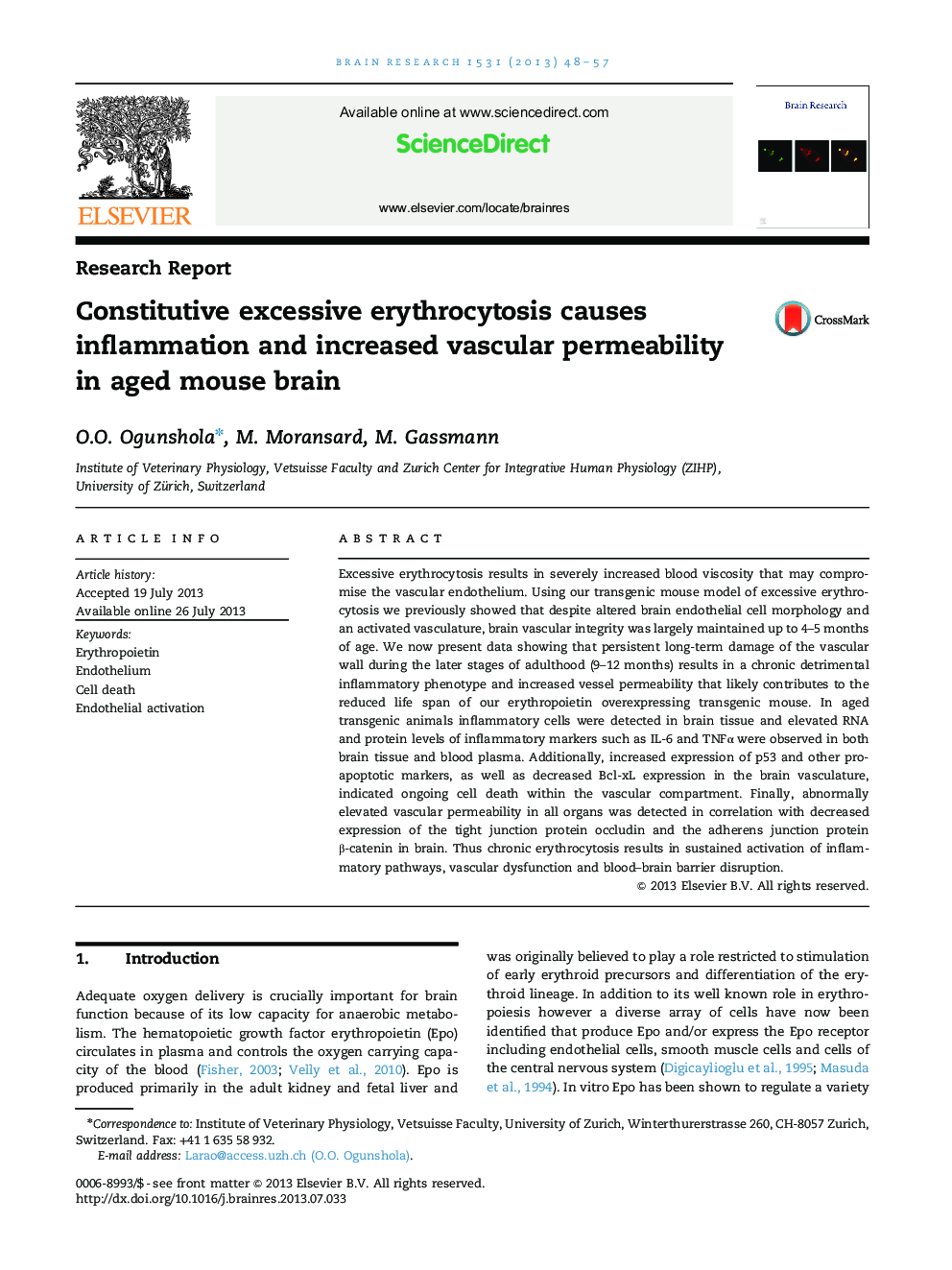| Article ID | Journal | Published Year | Pages | File Type |
|---|---|---|---|---|
| 6263707 | Brain Research | 2013 | 10 Pages |
â¢Long term effects of chronic erythrocytosis in aged mice (9-12 months) are shown.â¢Inflammatory and cell death proteins are upregulated in the vascular compartment.â¢Increased levels of IL-6 are detected systemically.â¢Vascular permeability is increased in all organs including brain.â¢Overall, multiple mechanisms reduce organ function and contribute to premature death.
Excessive erythrocytosis results in severely increased blood viscosity that may compromise the vascular endothelium. Using our transgenic mouse model of excessive erythrocytosis we previously showed that despite altered brain endothelial cell morphology and an activated vasculature, brain vascular integrity was largely maintained up to 4-5 months of age. We now present data showing that persistent long-term damage of the vascular wall during the later stages of adulthood (9-12 months) results in a chronic detrimental inflammatory phenotype and increased vessel permeability that likely contributes to the reduced life span of our erythropoietin overexpressing transgenic mouse. In aged transgenic animals inflammatory cells were detected in brain tissue and elevated RNA and protein levels of inflammatory markers such as IL-6 and TNFα were observed in both brain tissue and blood plasma. Additionally, increased expression of p53 and other pro-apoptotic markers, as well as decreased Bcl-xL expression in the brain vasculature, indicated ongoing cell death within the vascular compartment. Finally, abnormally elevated vascular permeability in all organs was detected in correlation with decreased expression of the tight junction protein occludin and the adherens junction protein β-catenin in brain. Thus chronic erythrocytosis results in sustained activation of inflammatory pathways, vascular dysfunction and blood-brain barrier disruption.
